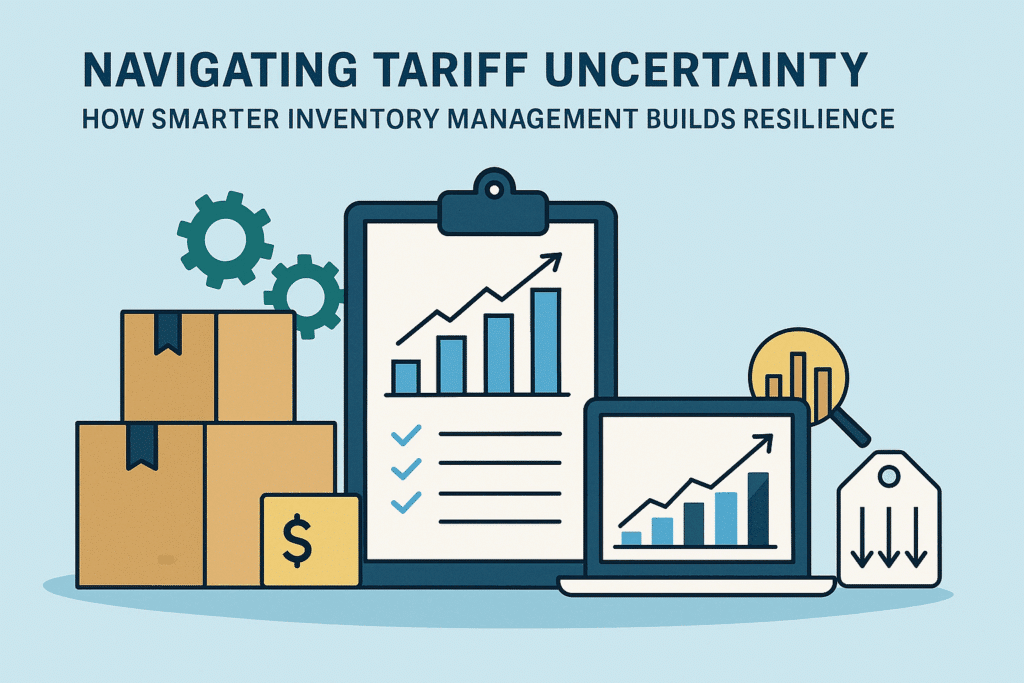
In an era of shifting global trade policies, few challenges are as disruptive to business operations as tariff uncertainty. Whether it’s a sudden hike on imported materials or evolving international trade agreements, these changes can throw off cost structures, disrupt supply chains, and squeeze profit margins—often with little warning.
For businesses that rely on global suppliers or import/export operations, staying agile in the face of tariff-related turbulence isn’t just helpful—it’s essential. This is where having the right inventory management system can make all the difference.
1. Clarity Around Landed Costs
Tariffs directly affect a company’s landed costs—the total expense of getting a product into inventory, including shipping, duties, taxes, and fees. SOS Inventory helps you track these costs in real time, giving decision-makers the insights they need to:
- Adjust product pricing before margins are hit
- Reallocate resources to protect profitability
- Monitor cost changes across suppliers and time periods
This visibility is key when trying to adapt quickly to new regulations.
2. Smarter Supplier Strategies
When tariffs are introduced or increased, some suppliers may become significantly more expensive overnight. SOS Inventory offers detailed purchasing data and vendor performance analytics that can support smarter sourcing decisions by helping you:
- Evaluate the cost impact of each supplier
- Identify opportunities to diversify sourcing
- Understand long-term cost trends across regions
This kind of data-driven decision-making can reduce reliance on high-tariff markets and foster greater supply chain flexibility.
3. Plans With Built-In Flexibility
Tariff changes can disrupt demand patterns just as easily as they disrupt supply chains. Plan ahead by using SOS Inventory’s historical data, seasonality trends, and inventory turnover to create more resilient forecasts. Businesses can simulate different scenarios—such as sudden cost increases or longer lead times—and adjust plans accordingly.
4. Custom Reporting for Better Insight
The ability to generate custom reports—especially ones that isolate tariff-related expenses or analyze product-level cost changes—can be incredibly useful. These reports help teams spot early warning signs, keep stakeholders informed, and ensure compliance with evolving financial or trade reporting standards.
5. Integrations That Keep Data in Sync
When your inventory management tools integrate smoothly with accounting platforms, it ensures that tariff-related costs are accurately reflected in financial reports, product pricing, and profit analysis. This reduces the risk of error and helps maintain a consistent picture of business health.
Moving Forward with Confidence
Tariff-related uncertainty isn’t something most businesses can control—but how they respond to it is. By leveraging smarter inventory management tools and maintaining visibility across cost and supply chain data, companies can not only weather the uncertainty but emerge stronger and more strategic.
If your current systems don’t offer this level of insight, it may be time to explore inventory solutions that are better equipped for today’s global realities.
